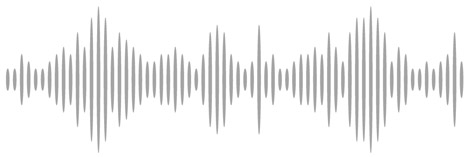Throughout our life, cinema, television and video games make us hear thousands of sound effects. To the point that certain sounds that we have never heard in reality have become familiar to us. Here is an overview of these sounds that we think we know.
Violence sounds

Punches
These are some of the most common sound effects in movies. In reality, the actual sound of a punch or slap is quite weak and inexpressive. In movies, we often use very exaggerated sound effects for a more dramatic effect.
In David Fincher’s film Fight Club , the punches are quite realistic. They don’t sound amazing at first, but they cause some discomfort and paradoxically a feeling of stronger violence.
Gunshots
In peacetime, we do not hear many firearms shots in our daily lives. However, these sound effects are common in films and even inevitable in westerns, thrillers, adventure films and action films. Gunshots on the screen are quite different from reality, especially for physical reasons. That’s the subject of a dedicated article.
Breaking bones
Who has never heard the sound of a broken bone, or worse, a broken neck? In fact, you’ve probably heard a celery stalk. The victims of fractures describe the sound as strong and short, which the cinema transcribes rather poorly. In the movies, the sound designers and foley artists tend to torture vegetables or salad to mimic broken bones. It creates organic sound effects, more detailed and more evocative than real ones.
Animals
The eagle
The eagle screech is very often used on the screen to evoke the immensity of a desert place. The film The Mask of Zorro has a crazy number of eagle screeches. Here is what it sounds like :
Snakes
The forked tongue of snakes allows them to sense where smells are coming from … in a perfectly silent manner. In all the stories, the snakes are a danger or embody a traitor. This is why we often hear their threatening hiss in movies. In the wild, most snakes are actually able to hiss, but the only purpose is to protect themselves when they feel threatened.
Bats and rats
Rats, mice and bats communicate mainly in frequencies that are inaudible to humans (ultrasound). And like snakes, their role in movies is often associated with fear. They are therefore associated with scary screams and squeaks made from scratch.
There are several recipes for making these sounds: rubbing small pieces of polystyrene against a window pane or, like the famous sound designer Ben Burt in Indiana Jones and the last crusade, pitching up chicken calls.
Crawling maggots
If you listen carefully to a compost bin, you may be able to hear the activity of the worms, larvae and insects that inhabit it. But this sound is very weak, nothing like the swarming worms and maggots that we see on the screen. Again, those sounds come from the imagination of foley artists. Overcooked pasta, shampoo or saliva, everything can be used to create disgusting sounds
Sounds that belong to the past
Dinosaurs
There are considerable uncertainties about the dinosaurs. And there no way to know the cries and calls they made Their role as a monster in films compels sound designers to take inspiration from today’s large predators, which are mainly mammals or reptiles. However, recent scientific discoveries show that the dinosaurs were covered with feathers and that they are probably the ancestors of birds, not crocodiles. We can therefore legitimately assume that their calls were more like turkeys or chirps than the roars of Jurassic Park.
Swords fight
Nowadays, we don’t often have the opportunity to cross swords with an adversary. We have examples of metallic sounds in everyday life, but the cinema and the hundreds “swashbuckling” films have instilled in us the representation of its sounds.
Steam trains
If you ask a child “What noise does a train make?”, he will certainly answer “choo choo”. This onomatopoeia corresponds to the sound of a steam locomotive. The last one working in France stopped in the 1970s. But this sound remains very popular and very representative, even if it’s totally different from modern trains. No doubt it is thanks to films.
Exotic sounds
Jungle
Jungles, or by extension tropical forests, are present all around the globe. These regions are the richest in biodiversity and therefore in sounds. Although we have a mental representation of an abundant jungle sound, we cannot imagine the infinity of soundscapes that rainforests can make. An area ambience even changes throughout the day.
My friend Jean-Christophe Gadrat went to the Borneo rainforest to seek rare products for his company. He took the opportunity to record a series of soundscapes for me. Here are several takes from the exact same place at different times of the day. That’s hard to believe.
Arctic wind
Not many of us have traveled to the polar regions. However, we easily recognize the distinctive whistle of the cold wind, which encounters no obstacles. It’s a fairly pure sound, which you can easily imitate by mouth or with synthesizers. It creates a feeling of cold for the audience. Here is a sound of cold wind I created from scratch for the film Settling. It is certainly different from reality.




